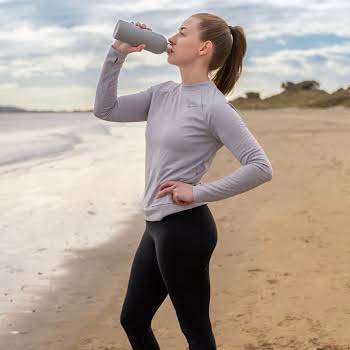Ask the Doctor: ‘My New Year’s resolution is to get fit, but I’m overweight and at risk of injury — what should I do?’
By Sarah Gill
07th Jan 2024
07th Jan 2024
All your burning health questions answered by the professionals.
“My New Year’s resolution was to get fit, but I’m overweight and at risk of injury — what should I do?”

Answer from Chris Simpson, Exercise Physiologist, Beacon Hospital
A lot of people decide that with a new year, comes the opportunity to start afresh with goals of health and fitness, however, it is important to do so safely.
With being overweight and at risk of injury, it is advisable to take on this journey with the guidance of a trained professional. A professional will be able to use equipment to test your current body composition and levels of fitness and design a plan for you to safely hit your goals while also taking health history and injury risks into account.
In Beacon Hospital Sports Lab we see people of all ages from teenagers to those in their seventies starting out on their health and fitness journey. We recommend starting with a full medical history and then a BodPod analysis. With the BodPod, all you have to do is sit inside for a minute or two in order to have a comprehensive and accurate body composition analysis.
Information obtained includes where you are in terms of body fat percentage, fat free mass percentage and basic metabolic rate, among other things. The beauty of using the BodPod for those starting out on their fitness and/or weight-loss journey is that, aside from giving an accurate overview, it makes all changes easy to track. This can help to boost motivation if it wavers over time.
Once the analysis is complete, we will go through this with the client and also discuss their medical and injury history. We may also do another test, called a cardio-pulmonary exercise test. This test, for beginners, involves gentle exercise on a treadmill or bike while connected to a heart and gas monitor.
The test consists of exercising continuously for between eight to 12 minutes, while connected to a heart rate monitor with a mask covering the nose and mouth connected to a gas analyser. The exercise intensity will be very low to begin with, progressing to the required intensity i.e. sub max or maximal effort.
The results of all of the above will then be used to develop a personalised exercise plan. Your physio or coach can monitor your progress and help or advise you when necessary. After a set period of time, I recommend repeating the initial tests. This allows us to view your progress visually on paper. Seeing your hard work lead to progress on a graph in front of you really gives a great boost!
Having a coach set up a personalised plan greatly reduces the incidents of injury as well as increasing goal success rates. Please remember that getting fit and healthy is a marathon and not a sprint. Taking things slow and steady will help to get you there safely and to build new, healthier habits. Jumping in at the deep end is never a good idea and often leads to injury and is as an almost guaranteed way to fail.
Have a question for the professionals you’d like answered? Get in touch with sarah.gill@image.ie with the subject headline ‘Ask The Doctor’. This article was originally published in January 2023.























